04/21/18
Filed under:
General
Posted by:
site admin @ 8:29 pm
2599 Sun 21 Apr 2018 LESSON



Buddha


 Buddha
Buddha


 Buddha
Buddha


 Buddha
Buddha


 Buddha
Buddha


 Buddha
Buddha


 Buddha
Buddha


 Buddha
Buddha


 Buddha
Buddha


 Buddha
Buddha


 Buddha
Buddha


 Buddha
Buddha


 Buddha
Buddha

http://www.yesterland.com/circarama.html

The Bell System presents
America the Beautiful
in Circarama
O beautiful for spacious skies,
For amber waves of grain,
For purple mountain majesties
Above the fruited plain!
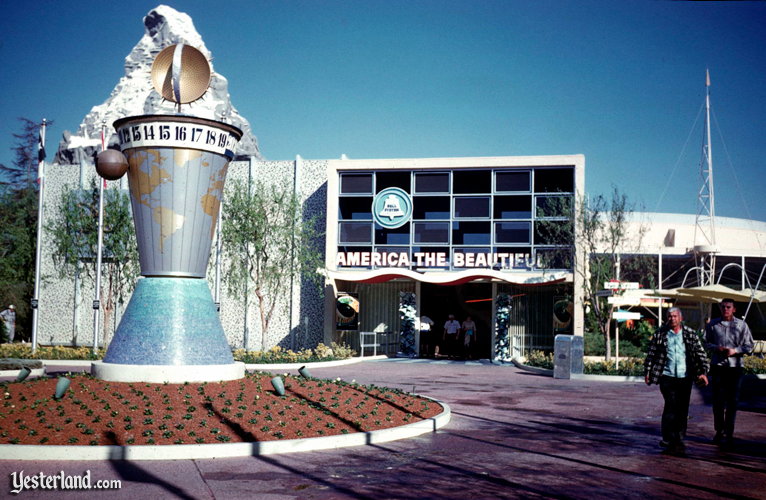
Perhaps you’re here because you saw this advertisement in the Los Angeles Times of June 14, 1960:
New!
The Bell System Presents
“America the Beautiful”
in CIRCARAMA
Circarama puts you in the middle of the action, completely surrounded by magnificent motion pictures in color.
Among the many fascinating places Circarama takes you in “America the
Beautiful” are New York Harbor; Times Square; a Vermont country church
set against the splendor of the autumn foliage; Williamsburg,
Virginia—cradle of American culture; Pittsburgh steel mills; Detroit
automobile factories; Midwestern railroad freight yards; Oklahoma
cowboys rounding up cattle; wheat-harvesting combines in Montana; copper
mines in Utah; Monument Valley; Hoover Dam; The Grand Canyon; San
Francisco; The Golden Gate Bridge; and campus life at America’s great
University of California at Los Angeles.
Presented free of charge.
Yes, it’s free.
There’s no need to reach for your ticket book or to stop at a ticket booth.
You can thank The Bell System and your local host company, Pacific Telephone.
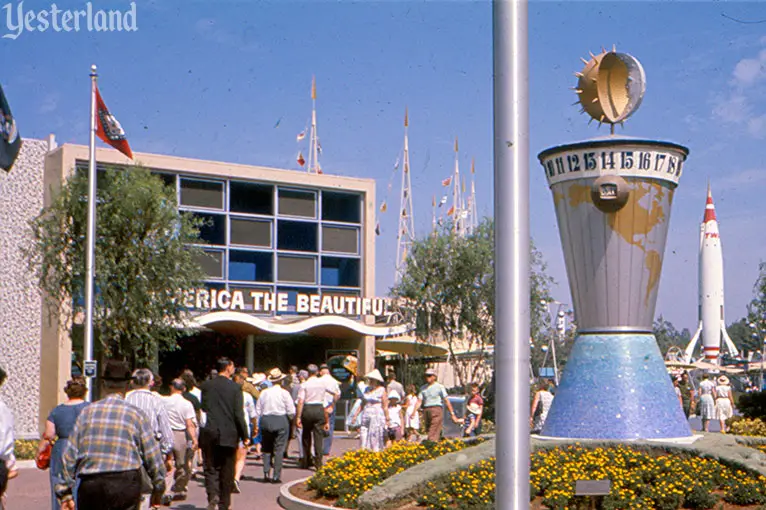
This presentation puts you “in the middle of everything.”
Eleven movie screens form a circle above your head.
Eleven perfectly synchronized projectors show eleven 16mm films, surrounding you with a 360-degree travelogue.
Most other guests are staring at the front screens.
But they’re missing half the fun.
The whole idea is to look all around to see what’s going on, even if the
filmmakers seem to be directing your attention primarily to the front
of the theater.
If you’ve seen this movie too many times—after all, it’s a free
attraction—here’s how you can have an entirely new experience: Watch the
entire movie facing back screens. See where you’ve been instead of
where you’re going.
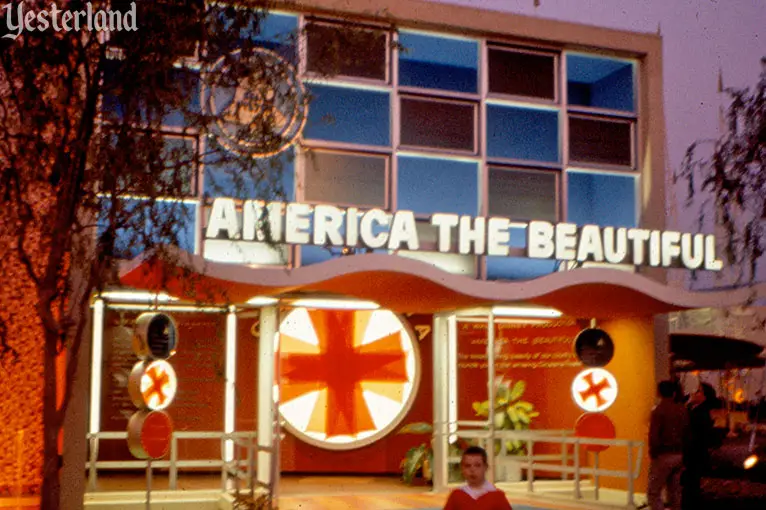
|
The name Circarama is a play on Cinerama, the three-film,
three-projector process used to show some Hollywood features on wide,
curving screens in specially-equipped movie houses.
Does this mean 360-degree movie houses will be next?
A paragraph in a New York Times article (“Disney Presents Movies-In-Round,” June 28, 1955) suggests this might happen:
Although Circarama is not planned for theatre use at present, Mr. [Walt]
Disney, for one, does not rule out its potential adaptation to a highly
specialized form of dramatic motion picture presentation. It was less
than a decade ago that experienced Hollywood showmen failed to recognize
the commercial possibilities of Cinerama, when its late inventor, Fred
Waller, held demonstration showings in a barn in Oyster Bay, N. Y.
|
|
|
America the Beautiful in Circarama opened at Disneyland in June 1960.
But it wasn’t the first Circarama movie.
That honor went to A Tour of the West, presented by American Motors—builder of Hudson, Nash, and Rambler automobiles—and its appliance division, Kelvinator.
The 1987 book Disneyland: Inside Story by Randy Bright quoted an American Motors Corporation press release, dated June 27, 1955:
“This combination of photographic skills and entertainment talents
promises an unusual spectacle for visitors to Disneyland. We’re happy to
have a part to play in making Circarama possible. As it represents
added pleasure and value for the public, sponsorship of the Circarama is
another forward step in our program to make American Motors mean more
for Americans.”
— George Romney, President, American Motors Corporation
A Tour of the West was an original 1955 attraction at Disneyland.
(There’s no word on whether Romney took his eight-year-old son to the opening of the attraction.)
It closed around the beginning of 1960 to make way for America the Beautiful.
Walt Disney’s involvement with the 1964-65 New York World’s Fair is well
known.
Far fewer people know that six years earlier, a Disney attraction was
part of another Cold War era international expo, the 1958 Brussels
(Belgium) World’s Fair.
A New York Times article (“U. S. To Be Candid At Brussels Fair,” March 5, 1958) gave a preview of the American pavilion before the fair opened:
Innovations in photographic and movie projection methods will permit a
360-degree view of “the face of America” on a room-circling screen. The
projection method, developed by Walt Disney, is known as “Circarama”. A
color film, titled “America: The Land and The People,” showing a trip
across the country, will be exhibited.
By the time the fair opened, the color film had a new name.
Walt Disney’s America the Beautiful was a highlight of the American pavilion.
Los Angeles Times writer Jerry Hulse (“Miniature World Unfolds at
the Fair,” April 22, 1958) wrote about the audience reaction to the
Circarama presentation: “And with the ending there is a loud applause…
from persons of many countries… yes, even a few Russian visitors.”
The next stop for Circarama was the American National Exhibition in Moscow, Russia in 1959.
The U.S. Government arranged for Walt Disney to redo the narration of America the Beautiful in Russian.
By the time America the Beautiful opened at Disneyland in 1960, it was the third version of the 360-degree movie, playing in its third country.
|
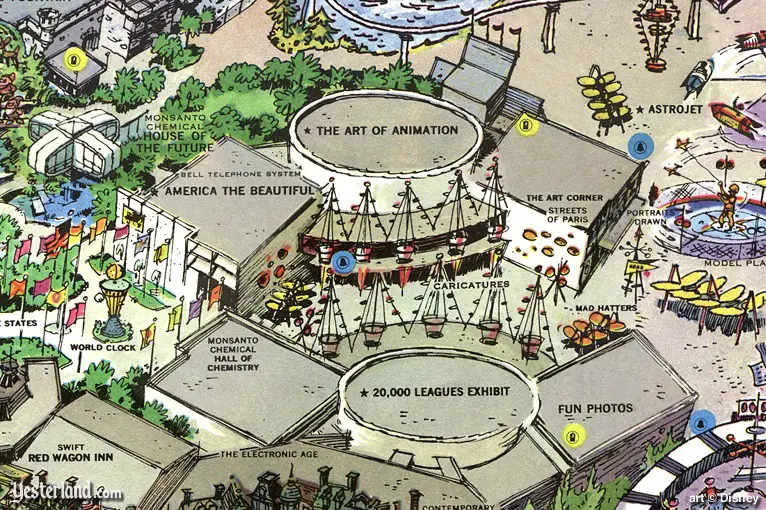
Detail from 1964 Disneyland souvenir map
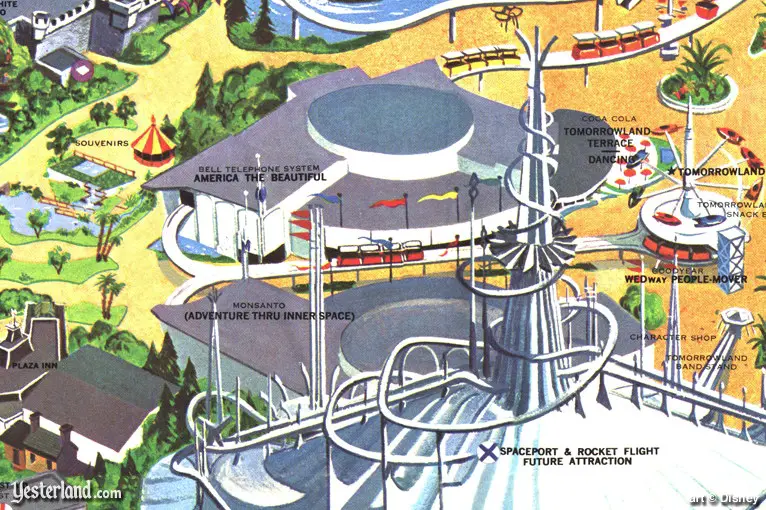
Detail from 1968 Disneyland souvenir map
The eleven-screen America the Beautiful attraction at Disneyland closed permanently in September 1966.
America the Beautiful was replaced by… America the Beautiful!
Despite having the same name, the 1967 version of America the Beautiful
was an entirely new movie.
This time, it was filmed in the new nine-screen Circle-Vision 360
process, and was shown in a much larger theater using nine 35mm movie
projectors.
The original Circarama was housed in only the left section of the north
Tomorrowland building, and that space was also used for exhibits.
When the New Tomorrowland opened in 1967, the left section became the
pre-show area where guests would wait. The new Circle-Vision 360 theater
took up the round central section.
Today, both sections are used for Buzz Lightyear Astro Blasters.
Circarama was such an ingenious, original idea that Walt Disney had it patented.
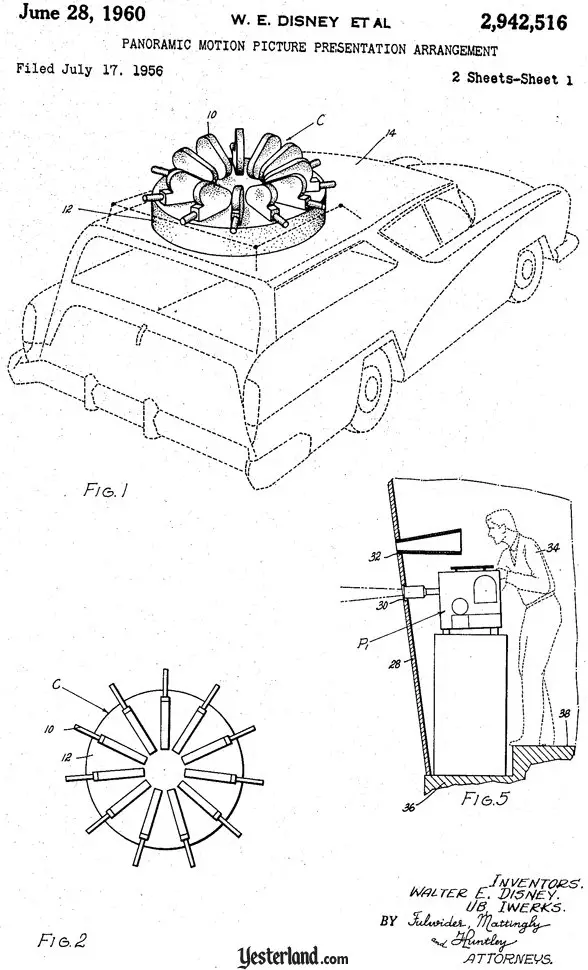

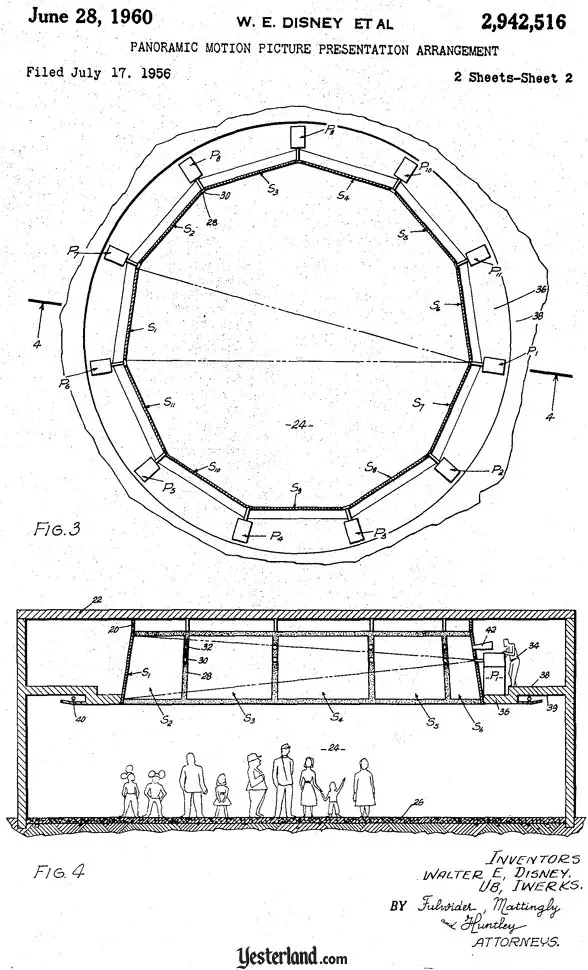
Notice that the patent was filed on the first anniversary of Disneyland’s press opening and awarded the same month that America the Beautiful opened at Disneyland.
When you visit the Walt Disney Family Museum in San Francisco, be sure to look for the original Circarama camera.
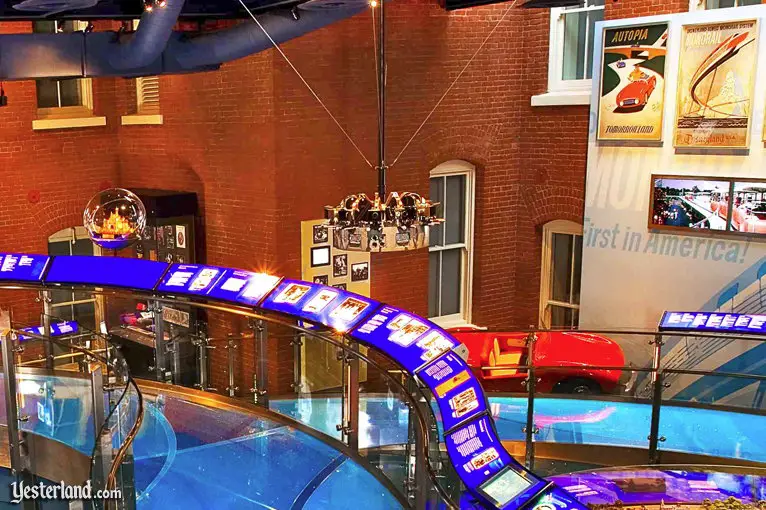

http://www.sbwire.com/press-releases/a-new-age-4dmovie-viewing-experience-with-circarama-cinema-619756.htm
A New Age 4DMovie Viewing Experience with Circarama Cinema
In the present years there have been a
wide popularity of the 4D cinema. After 3D cinema has come to the market
it had got all the attention it waited for and now the 4D cinema is
getting into the different corners of the globe. The companies all over
the world are coming with their best collections and technologies
regarding the 4D cinemas. This is further increasing the popularity of
this mode of cinema.
Beijing, China — (SBWIRE) — 08/24/2015 —
In the last one century the art of film making and film projections
system has undergone great many changes. In the light of the historical
events and series of changes that the film-making has gone through, a
great journey has already been made. From the Lumiere Brothers to the
recent 3D films, it was a great up and down journey for all. However,
the journey has not ended with the 3D films. Now the recent 4D films are
hitting the market with new variations of movie viewing experience.
Among the different cinemas that have hit the globe with their technical
superiority and great variation in the making and presentation, the 4D
films have surpassed all limits. The movie viewing experience of these
films have been spectacular. The unforgettable movie viewing experience
has brought a new wave in the film market where the films making
companies have been heavily inspired with the demands. Among the
companies that have come up with the 4D motion cinema technologies, one has to take the name of Circarama cinema.
Circarama cinema
has brought a never before movie viewing experience for the viewers.
The breathtaking visual effect will come life as if the viewer can touch
it. This is the kind of cinema that can transfer the viewers’
imagination into the next level.
In order to make that happen, many failed attempts were made before. But
now, the 4D cinemas are also being attached with the 5D, 6D and even 7D
effects. No wonder that these effects are adding more fun into the
movie viewing.
About Circarama Company
The Circarama Company whose mother company is China Aerospace Creation
Technology or CACT, now happens to be on the forefront of the 4D cinema
presentation companies and with the most advanced Chinese cinema making
technologies they have been able to produce long lists of the films
that have 4D presentations. Obviously this can be taken as a huge step
for the history of motion cinema.
Their cinema technique, which is also called as the circular Screen
cinema as a 120 to 180 degree screen and the ROI is the quickest in the
settings. The whole settings can be installed fast such is its fittings.
At the same time the requirements are lowest on the site. With the best
dynamic experience the viewers are loving thee presentations of these
cinemas. From the kind of response that these cinemas are having from
the different corners of the world, it can be said that the anticipation
is that in a very few years the 4D market will be the dominant one all
over.
For more information visit the website http://cactsim.com/show.asp?Id=26
For Media Contact:
Company: China Aerospace Creation Technology Co., Ltd
Phone: 0086-10-68647537
Email Id: amusementsimulator@gmail.com
Website: http://cactsim.com/
Robert Key
China Aerospace Creation Technology Co., Ltd
0086-10-68647537
Follow China Aerospace Creation Technology Co., Ltd
http://cinematreasures.org/theaters/56195


Located in Tomorrowland, in Disneyland. Circarama
opened on July 15, 1955 screening “A Tour of the West” across 9 large
screens for a panaramic view of the movie. The audience stood in the
center of the auditorium. It was renamed Circle-Vision 360 in 1967.
Closed on September 8, 1997 with “America the Beautiful”.
It became the queue area for the short-lived Rocket
Rods ride (May 22, 1998 to April 27, 2001) and is now “Buzz Lightyear’s
Astro Blasters”(soft opening – March 10, 2005), official opening – March
17, 2005). It’s still operating.
Contributed by
David Coppock

 The
The
front of the “Cavalcade” Cinema.
Press image to see an enlargement
The “Circlorama” process was developed by the Russian professor E.
Goldovsky, Moscow Cinema Research Institute.
The London Circlorama cinema opened 9 May 1963. The circular
auditoria measured 18 meters in diameter and had a height of 15
meters. The screen surrounded the audience and had a total length of
45 meters. The lower edge of the screen was raised 2½ meters above
the floor.
11 projectors, were arranged in a gallery around the auditoria, and
projected their pictures on 1/11 per circular projection screen. The
9-channel sound was played from a separate 35mm Philips sound
reproducer.
The projectors and sound reproducer were electronically synchronized
through a interlock system. For sound reproduction 51 separate
speakers had been installed behind the screen and in the floor.
There were room for 500 spectators. The foyer was downstairs with
room
for a 1000 people.
Leonard Urry had set up Circlorama together with Leon Heppner, a Russian
entrepreneur who had lived in London for several years. They acquired a
bomb site in Denman Street just behind Piccadilly Circus and constructed
a building to house the new 360 degree cinema which they had imported
from Russia. I remember Leonard telling me the building had cost
£120K. It housed the now familiar eleven screens which were arranged
round the wall of the circular building. The diameter of the auditorium
was 70ft and was served by eleven 35mm Phillips water-cooled, pulse
light projectors which were housed in an enclosed gallery. On a level
with the centre of the screens the eleven projectors were synchronised
to form a continuous 360 degree projected image, and together with a
nine track stereo system it was quite a spectacular cinematic
experience. The installation had been carried out by Frank Brockliss Ltd
who were located in Wardour Street.
Mr.
Stanley Long 2006.
I had known Leonard for several years. He had financed one of my early
films “West End Jungle” which was a low budget dramatised documentary
destined for theatrical release. The venture had been financially very
successful despite censorship problems. Leonard asked if I might be
interested in making a new film for Circlorama, to replace the one which
had been running unsuccessfully for about 6 months. The business was
terrible he told me, in spite of buying, at great cost, a new entrance
from Piccadilly Circus. The problem, he thought was due to the very
boring ‘propaganda’ nature of the Russian film. He wanted a lighter form
of entertainment with rollercoaster type shots which would be more
exciting for an audience, who had to stand in the auditorium to watch
the twenty minute show. Being by nature a technically minded film maker
(I was a Cameraman) I was intrigued by the prospect.
The process didn’t seem too much of a problem to me, and before long,
after I had worked out how to do it, I came back to Leonard with a
positive interest. I told him that it would require a small budget to
make a test in order to make sure it was possible, and to project the
result in the cinema, so that they could make a final decision. He
agreed to funding a test and within a few days I was busy working out
how to go about it. Firstly I worked out the geometry, and found that
the eleven cameras would require to be fitted with 35mm lenses to
cover
the picture circle. The cameras would be mounted on a circular
aluminium
plate one half inch thick. Synchronisation would be achieved with
mains
motors.
|
|
Making a British Circlorama
|
|
 35mm 35mm
rig with the eleven ARRIs. Magazines are off (they were being reloaded).
Press image for an enlargement.
Getting hold of
eleven 35mm Arriflex cameras to do such a test proved to
be a problem in 1963. A phone call to the new camera hire company run
by Sydney Samuelson (now Sir Sydney) and his brothers David and
Michael, requesting to rent eleven Arriflexes complete with mains motors
driven through a rectifier with a fram meter to hold sync, produced
peals of laughter at the other end of the phone.
“What an earth are you doing Stanley? I have never heard of anyone
needing anything like that number of cameras”.
When he had calmed down from his initial reaction, I
explained why I wanted them and that I only wanted them for one day for
the test. He promised to let me know the following day. I had a call at 12
o’clock to say that he had managed to find the eleven cameras but it
would have to be on a Sunday when the cameras were not in use
although he was having difficulty finding the right number of 35mm
lenses as the standard kit of lenses contained only a 28mm lens. He
would be short of at least 4. I decided to go ahead replacing the
shortfall with 4×40mm lenses which would slightly affect some of the
screens.
A Sunday was chosen and arrangements made to use a 40ft boat which was
kept on the river Thames at Chelsea Reach in London. The cameras were
mounted on the cabin roof, and we set off down river to make a series of
shots passing the Houses of Parliament and Tower Bridge. We shot in black
and white for the sake of economy.
|
|
 Filming Filming
a short test film in 35mm B&W to demonstrate the Circlorama system.
Scenes included footage made on the Themes river. Stanley Long (left) and Don Lord
(right) operating the cameras.
The film was processed at Technicolor the following day and we waited
until the cinema was closed that evening to screen the results. It
worked! And apart from the four screens that had the 40mm lenses, the
matching was perfect. Leonard and Leon were delighted and a meeting was
arranged for the following day to discuss further arrangements for the
production and I was to come up with an approximate budget to complete
the twenty minute ‘epic’. I worked most of the night on this and came up
with a rough figure of what it might cost. One of the problems I had was
the availability of the cameras. Obviously it would not be practical to
hire them. Also there was another problem. Once the cameras had been
mounted in position I would be unable to move them, because every camera
has a slightly different gate pitch and changing a camera would mean
that the racking would be affected and each time a new shot was done, if
a camera had changed, the projectors would have to be adjusted. So it
meant that eleven cameras had to be purchased. This of course made the
budget sky high. Another problem was that even shooting one take was
eleven to one over normal shooting, take two would put the shooting
ratio to 22 to 1 not counting run ups etc. The stock cost in colour would
be horrendous not withstanding I came up with the final figure which I
then presented at the meeting. It was £150.000! more than the cost of
the original cinema!
Obviously with only one cinema in the country which was capable of
showing the finished film, it was a ‘no go’. Even the possibility of
selling off the cameras after the production didn’t ease the budget
sufficiently to make the project viable. Leonard called me a week later
and said the cinema was doing so badly at the box office that they faced
closure unless something was done. There was one possibility in that
the Russians had a new gimmick. They had fitted Cinemascope lenses to
the cameras vertically and produced a new film which used double height
screens. A print was despatched to England and Harkness Ltd were given
the order to put extra screens in the auditorium. It also meant that
eleven anamorphic lens had to be purchased for the projectors.
The day arrived when all this was put in place and I was asked to attend
the test screening. The whole thing was a disaster, not only was the film
content worse than the first one, but the print suffered from racking
problems similar to those I knew about when we tried to change camera
positions between shots. The screening ended up with the poor
projectionists running round the gallery adjusting the racking after
every scene. By the time the picture was correctly lined up the scene
changed and they had to start all over again. It was a disaster. Leonard
came up to me after the screening, his face said everything.
“Unless we
can sort something out, we’re facing closure.”
I thought long and hard
that evening. How could we reduce the budget?
|
|
Enter, an eccentric Millionaire
|
|
 The The
front of the “Cavalcade” Cinema.
The following morning I telephoned Leonard. I told him I had an idea and
arranged to meet him that afternoon. My idea was to change the whole
operation over to 16mm! We could buy eleven 16mm cameras for a fraction
of the cost of 35mm. The stock cost would be dramatically reduced and
likewise the processing. I had worked out some rough figures and it
looked as if I could reduce the cost by about seventy five per cent. It
meant changing all the projection equipment in the cinema, but the 35mm
machines could be sold as replacements to cinemas. So they would be
looking at the difference between the cost of the 16mm and the sale of
the 35mm ones, plus the cost of the changeover. There was a marginal
advantage in that, as we owned the cameras we could make regular changes
to the programme. It all sounded quite practical and Leonard and Leon
were convinced that this could be the solution. However there would be
no going back once the decision had been made, and there was no way we
could make tests. It was a simple - go or no go! It was then that I was
told where the money was coming from for this whole venture.
Leonard acted as a trustee for an eccentric millionaire by the name of
Harry de Vere Clifton. Apparently soon after Circlorama had opened, he
had walked on his own from the Ritz hotel Piccadilly to the Circlorama
cinema in Piccadilly Circus, paid his 3/6p and went in to see the show
unannounced. He didn’t like what he saw, and thought the film should be
changed to something more interesting. Leonard had talked to him about
me and he asked Leonard to arrange a meeting to talk about his ‘little
toy’ as he called it. The ‘meeting’ turned out to be at the Ritz Hotel.
I was met by a Butler and shown into the enormous penthouse suite, and
then into a large bedroom with a four poster bed, in which was sitting
bolt upright an elderly man with a long grey beard and long hair. He
looked for all the world like Rip Van Winkle. I was summoned to sit at
his bedside and was introduced to this strange figure who Leonard had
told me was worth about 90 million pounds and that was in 1963!! Clifton
started the conversation
“Mr Stanley Long, I have heard all about you,
and I am delighted that you may be able to save my little toy from
closing. Urry has told me all about your ideas for a new film. Do you
know anything about Hobgoblins?”
The question was quite out the blue
‘not much I confessed’. ’Oh that’s a pity’ he replied, ‘but I would like
a scene with some Hobgoblins. See what you can do’. With that he
politely dismissed me. ‘Well off you go and good luck, I look forward to
seeing your new film’. I left the room in a daze, this had been the most
bizarre meeting I had ever experienced., and certainly the oddest project
I had been involved with. I asked Leonard if it had all been some kind
of joke ‘No its no joke’ he said. ‘I am trustee to the inherited
fortune of Harry De Vere Clifton and the Clifton estate and my job is to
look after the crazy whims and investments of Harry De Vere Clifton’.
‘Why then’, I asked ‘was there so much problem with the budget?’ ‘I told
you’ he said ‘I have to do the best job I can to control expenditure. Now
you go off and make the film in 16mm’. ’And what about the Hobgoblins’? I
asked , ‘Oh forget that, he won’t remember’ Leonard smiled.
And so it was, that I set out to start the most interesting and
challenging job I had ever undertaken. I arrived in Paris later that
month to purchase 12 (one spare) Beaulieu 16mm 100’ loading cameras with
15mm lenses. On my return to England, I set about designing the rig
which was to hold the eleven cameras and to find a way of keeping them
‘in sync’ during shooting. I tried several ways of doing this including
a rather clumsy method of mechanical linkage. Nothing worked. Then I
discovered that there was a small synchronous motor manufactured by a
company in West London, Evershed Vignoles Ltd, I went to see the
technical man there, and I discovered that they could make a gear which
fitted into the side of the cameras and it was the perfect solution. I
purchased 12 (one spare), and the cameras ran in perfect sync after a
short run up. When the cameras were up to speed I dropped a hoop over
the rig thereby giving me a reference point to pick up during the
editing stage. Then I turned to the problem of editing.
|
|
Editing 11 Strips of Film
|
|
 Stanley Stanley
Long with the 16mm camera rig in the middle of Clapham Junction railway
lines. Harry Green (Production manager) with back to camera, on
the right is an employee of British rail, Don Lord is below Stanley Long
fiddling with something, gentlemen and lady on the left are
unidentified.
Press image to see enlargement
I approached Acmade Ltd, a company specialising in editing equipment,
and from my specs they constructed a 12 gang synchroniser from 3×4
gang
machines. This coped with the eleven picture tracks plus one for
sound.
The bench was 5 feet deep!! The editor required long arms to reach the
back tracks! During this time I was compiling a shot list, which
included amongst other things a view from inside a cage of lions
(Chipperfield), a scenic railway ride, a shot from the middle of the
rail
track at the busy Clapham Junction during a rush hour (courtesy
British Rail). Try doing that today with Health and Safety breathing
down your
neck. A lifeboat launch, various shots around London, including a
tracking shot from the roof of our camera car going down the Mall with
Buckingham Palace in the background and the Horseguards Cavalry in the
foreground (with the leader brandishing his sword at our camera car,
mouthing ‘f… off’, and a grand finale with ‘The Swinging Blue Jeans’ a
popular group of the time, which I photographed at the Leicester
Square
Ballroom. I also mounted the camera rig onto the back of an E type Jag
[Jaguar, ed] and had a racing driver go round Snetterton Race track in
the middle of
a gaggle of formula two cars. Ice skating from Streatham Ice rink.
The skating sequence was filmed at Streatham Ice rink (south London). I
rigged the cameras on a mount which had semi circular domes on the four
feet, this enabled me to push the rig about on the ice. We had a team of
champion skaters doing their bit skating round the cameras about 7 meters
from the centre. It all looked great on the screen. of course it was
essential for any crew to keep well away from the rig at all times, so I
fitted a remote control to the cameras, (this was very useful for the lions
cage!!). I remember slipping over on the ice as I came back to the cameras
after one take, I suffered for several days with a very sore arse!
There was something for everyone and I
soon learnt that I could quite effectively manipulate single tracks in
the cutting room to simulate the surround effect. An example of this
resulted in a comic scene with characters opening and closing doors on
various screens around the auditorium.
Whilst all this was going on Dr Leslie Knopp a well known expert on
cinema design, who had been responsible for the original installation,
was busy redesigning the new set up using a 16mm version of the
Phillips projector. In order to simplify the sound, I requested that
he
cut the original 9 track Sondor system using three follow reproducers,
with three track heads, down to one machine using one 35mm triple track
head. This proved to be as I thought, more effective as the separation
of sound was much clearer on three tracks rather than the nine in the
original. All these machines were interlocked with a Selsyn interlock
which was driven by one master motor and twelve slaves, one for each
projector and one for the sound reproducer. The projectors were water
cooled and the water jacket encased the rather ingenious lamp which
was
about the size of a cigarette and pulsed at the rate of 72 x 1 second
thereby giving three flashes per frame. This did away with the need
for
a shutter. These small lamps however never caught on as they had
drawbacks not least the problem of not being able to produce a good
red
on the screen. Therefore all the London buses came out a dirty shade
of
brown. Experiments with filters in front of the projector lens failed
to correct the problem. I suppose these tiny little lamps were the
forerunners of the halogen or HMI’s of today?
Finally the film was finished, the sound track recorded and the prints
were made. I had shot on 16mm Kodak Ektachrome reversal stock and as the
film was only made in 3200 K (Artificial light) I had to use Wratten 85
filters in front of the camera lenses when shooting in daylight. The film
was processed by Technicolor and because screen matching was imperative, I
requested the film go through the processing bath in the same order of the
cameras, so that any variation in the process would be gradual around the
360 degree screen. Technicolor were very helpful and did a wonderful job,
but all the way through shooting and post production I kept wishing for that
35mm. My goodness, it would have been so much easier!
|
|
“Circlorama Cavalcade” was an
Immediate Success
|
|
 Click Click
to see enlargement
The show opened with the title
“Circlorama Cavalcade” and was an
immediate success. No doubt much to do with the advertising! Of course it didn’t match up
to the 35mm version in technical terms, but I think the content was more
interesting to the general public. And it continued to do good business, so much so that Circlorama
commissioned a portable version to be made (by the firm of Harkness
Ltd) and when the show closed the whole shooting match was erected on
the end of the West
Pier at Blackpool in readiness for the summer season [1965]. Alas this was
complete disaster. Not surprisingly the thing kept breaking down being
victim to the salt air. It has to be remembered that this was a highly
technical and complicated set up and to expect it to operate in such an
environment was expecting far too much. I had spoken to Leonard Urry
about this when they were thinking of doing it but the installation was
not my responsibility and they went ahead anyway.
At the end of a disastrous season they were left with a enormous
structure on the end of Blackpool Pier, a large loss and a
correspondingly large quote from Harkness Ltd to remove it and
reassemble in the Kelvin Hall Glasgow in an effort to recoup some of
their losses during the Christmas season. Searching for someone who
would do a cheaper job and of course someone who was familiar with the
system, Leonard once again contacted me ‘Would I give them a quote to
remove the operation from Blackpool to Glasgow in time for the Christmas
season?’ Now I’ve always been up to a challenge, but this? I said I’d
think about it. I then contacted a company, Burgess Lane Ltd in Chiswick
West London, who dealt in the repair and servicing of projector
equipment and explained the nature of the job. I told the boss Mr
Burgess, that whilst I was familiar with the system and had made the
film it used, I was totally under qualified for the technical side. Did
they have an engineer who would understand this? And would he give me a
price for his services for what I estimated to be about a week. A few
days went by and he rang me. Yes, he had an engineer who was very good
with electronics and would like the opportunity to have a go. He gave me
a price which of course excluded expenses.
I then cobbled together a budget which would give me a nice profit, then
doubled it (because I really didn’t really want to do the job), then I
phoned Leonard, who immediately accepted my quote without question.
Christ I thought what did Harkness Ltd quote? Knowing the financial
state of Circlorama, I asked for 50 percent up front and the balance
when the picture was up and running at Kelvin hall. Leonard agreed, said
‘give me your schedule and you can come up and collect your cheque’. I
glanced at the calendar. It was the middle of November! I’d have to get
my skates on! I contacted Mr Burgess and arranged the job with his
genius engineer and said it would be end of November 1965.
|
|
 Click Click
to see enlargement
I had booked two tickets with Dan Air for a flight from Luton to
Blackpool and arranged to meet the brilliant engineer from Burgess
Lane
under the clock at Gloucester Road Terminal at 6pm. As I had not yet
met
this man, I arranged to identify myself by wearing a white carnation
(corny, I know, but it worked). Alan Lavender tapped me on the shoulder
at two minutes after six. ‘Are you Mr Long ?’ said this young man, who
I
judged could have been hardly more than about 17 years of age. ’Yes I
am’
I said eyeing him up and down convinced Mr Burgess had sent the tea
boy.
‘Do you know about SELSYN INTERLOCK SYSTEMS?’ I asked . ‘Yes I do’ he
confidently replied ‘Everyone thinks I’m young, actually I’m 23′.
On the
flight up to Blackpool in deep technical conversation with Alan I
quickly realised that what he didn’t know about electronics wasn’t worth
knowing. He certainly was a brilliant technician.
Our first job, as we eyed the massive structure at the end of the Pier
the following morning, was to get together a work force to act under our
instructions to dismantle and load the whole damn thing onto lorries for
the journey to Glasgow. So we visited the local labour exchange and
picked a motley bunch of unemployed Irishmen. They were to report for
work at the end of the pier at 8am sharp. There were eight in all, but
only seven turned up and we set to work. Payment would be made at the
end of the day ..in cash. They worked very well and by 5pm we had most
of the equipment out. Alan was dismantling and carefully storing
everything in the first lorry. Some of it was very heavy and we were glad
to have our willing helpers.
|
|
Circlorama Roadshow
|
|
 Photograph Photograph
taken on Blackpool Central pier, July 1965. Image from Ray Downing.
The next day we
awoke in our hotel rooms which overlooked the pier, looked out of the window
to discover there was a gale which we later learnt was force eight. After
breakfast, In our youthful ignorance, we set out for the end of the pier.
Out there it was worse, the wind was horrendous but we still set about the
task of dismantling the main structure . We must have been mad, stupid or
both. All the canvas panels which were fixed by rope to the outer structure
blew in the wind like huge sails. It was very difficult to fold the large
panels but somehow we managed. The third day was much the same weather
conditions but we were now under more pressure having fallen behind
schedule.
Our next job was to remove the dome covering. This consisted of one
piece of heavy canvas, seventy feet in diameter. A huge parachute like
piece of canvas held in position by rope at the edges and a metal
plate
made of steel, about two feet in diameter, at the centre. This in turn
was held in place by a large one inch bolt. The dome structure was
lowered by eleven winch like columns which held the roof. These had to
be gently lowered until the roof was level with the gallery. This is
when we could get to the large bolt which held the ‘parachute’ in
place.
We undid the bolt, the wind got inside the structure and blew the roof
canvas up and took the disc with it, tossing it a good 500ft into the
air. We shouted for everyone to take cover. The disc hit the wooden deck
of the pier just a few feet from some fishermen who were blissfully
unaware of what was happening a few hundred feet from where they were
sitting. We recovered the disc, which had dug itself vertically into
the
timber and thanked our lucky stars that no one had been injured. The
roof meanwhile was flapping like fury in a full force eight gale. We
had
to release it quickly or it would have shaken the structure to bits so
we decided to undo it from one side in order for it to blow away. When
it finally detached from the main structure, it flew into the wind and
ended up a mile to the north on the beach. We immediately sent a
recovery party, who bought it back on a truck as it was too heavy for
four men to carry.
|
|
 Perlux’s Perlux’s
advert for the 11 screens. Image: CTA Bulletin, July/ August 2011.
Click the image, to see enlargement.
We had started on the Monday, it was now Wednesday and being winter it
was too late to work. By four o’clock we had loaded two lorries and had
one to go. It was touch and go whether we would have sufficient space
to pack everything into the three vehicles. We did however complete the
loading by three o’clock the following afternoon. We had one anxious
moment when we realised the bolts which anchored the structure to the
pier had rotted due to a season of salt water spray. These would not
budge in spite of huge spanners which formed part of our dismantling
kit. We solved that one by hiring an oxyacetylene welding torch and
burning the buggers off. We waved the three vehicles off at 5pm that
afternoon with two of our team on board to look after things. Alan and I
took the train to Glasgow in order to arrive ahead of our convoy and
also to engage further labour for the erection. After our arrival in
Glasgow and fitting ourselves up with accommodation near the Kelvin hall
we took a cab down to recess the site where the Circlorama operation was
going to be. Bertram Mills Circus’ team was busy erecting a three ring circus
adjacent to where our structure was to be.
|
|
 Stanley Stanley
Long (left) with Leonard Urry c1976. How many of the guys will recognise
“The Govenor”.
The following morning bought some bad news. Our convoy had encountered
snow drifts on the Shaps Pass and would be held up until the pass was
cleared. This we were told could take days and as we were already behind
schedule, we were worried that we could miss the day when we had to
complete in order to qualify for the opening day. We couldn’t engage
labour until we knew the lorries would definitely arrive. However help
was at hand in the form of the rigging team from Bertram Mills’ circus. They had
already finished their job and by arrangement with Albert du Bois the
ringmaster, who kindly offered the services of his team, the moment our
vehicles arrived. Which they did after three worrying days. We had in
the meantime on behalf of Circlorama Ltd engaged all the staff necessary
for the running of the show once it was operational. It included three
projectionists on shifts, box office staff and a couple of managers. So
far, not bad for two of us plus unskilled labour. Our vehicles arrived
in the nick of time giving us just 24 hrs in which to get the whole
thing up and running. A daunting task, considering we had taken four
days to pull it down and load it on the transport. We geared into action
with the help of the Bertram Mills’ circus riggers.
Soon, at our direction, they were climbing all over the steel structure
like a load of monkeys. They were incredible. Alan started to unravel
the miles of wiring which he had carefully packed away in Blackpool. He
certainly was an electronic genius. It looked as if we might make it
after all. We did save a lot of time by not using the steel roof which
held the canvas. Instead we hired a block and tackle and suspended the
canvas from the roof of the Kelvin Hall and attached it to the perimeter
of the structure like a huge Arabian tent. The new staff had been
called in to be briefed and Alan fixed in the final connections. We had
not had any sleep for nearly 24 hours. We were both knackered, but we
had done the impossible. I hurried to telephone Leonard to tell him the
good news. He was pleased to hear from me, but in a solemn voice
declared he had some bad news. Circlorama had filed for bankruptcy and
would be unable to meet all its debts. This was shattering news. ‘What
do I do Leonard ?’ He replied ‘I’m sending some money to pay off the
staff. Give them a week’s notice and I’ll send enough to cover you above
the fifty per cent you have already received. But I’m afraid you’ll have
to wait for any further monies until after the creditor’s inspection.’
The cinema staff and the riggers were paid off.
Shattered, Alan and I went to our Hotel and slept the sleep of the
dead. We departed for London the next day and we went our different
ways. We had shared a most unusual adventure and to this day we have
remained good friends. Shortly after, he started his own company which
he built into the leading battery technology company in Europe (Pag
Ltd). His batteries power thousands of cameras worldwide. He also
manufactures lighting equipment for the film and T V industry. He has
been deservedly successful. You can visit his website
www.paguk.com
|
|
Where it all ended up
|
|
 Stanley Stanley
Long (right) with Jack Cardiff 2006
Being a major creditor I was invited to sit on the inspection committee
which consisted of other creditors besides myself. The late Ray Dutfield,
financial director Technicolor later to become Managing Director. The
accountant for Circlorama, the late George Winter and various people
from, I think, The Board of Trade etc. I’m not much up on this kind of
thing but I think the payout was something like two pence in the pound
so there was nothing in the kitty in the end. What happened to Harry De
Vere Clifton? I have no idea! Leon Heppner died in the eighties.
Leonard Urry retired in 1978 and went to live in Spain. He also died in
the mid eighties.
The structure went to scrap, the projection equipment was sold to
various post production film and TV companies for very little, and the
cameras were sold to the Ministry of Defence, through a contact of mine,
and were fitted into the helmets used by the RAF free fall team!. These
cameras were ideal because the ones they were using were clockwork with
a duration of only 40 seconds whilst the Circlorama cameras could run a
full 100 feet of film without stopping. So whilst I lost money I gained
a lot of experience, met a good and lasting friend, and had an adventure
which I have told many times. But now because Thomas Hauerslev, the
editor of in 70mm.com encouraged me to put the memories down on paper, the
full information of a most remarkable oddity in the history of film is
now available for posterity.
http://davelandweb.com/tomorrowland/circarama.html
Circarama
BACKSTORY (July 17, 1955–September 7, 1997):
Initially presented by American Motors, Circarama was previewed before
opening day with the film “A Tour of the West.” Circarama used eleven
16mm projectors mounted on the roof of an American Motors car (thus the
red color for the letters “car” on the marquee in pic #3) to create a
completely circular picture on a 360-degree screen. The original films
were shot by Paul Mantz and Frank Tallman, of TallMantz Aviation.
Guests stood in the center of the screen and were able to look
out in every direction and observe views of the Grand Canyon, Monument
Valley, Las Vegas, Balboa Bay, and the streets of Los Angeles. The
patent for Circarama was filed on the one-year anniversary of Disneyland
by both Walt Disney and Ub Iwerks, and was granted four years later on
June 28, 1960.
1960 brought a number of changes: in June, the film was now
“America the Beautiful” and the sponsor became The Bell System. The film
process changed, coinciding with the opening of the New Tomorrowland on
June 25, 1967, this time using a 35mm print that was enlarged from the
film of nine 16mm cameras instead of eleven. A few Bicentennial scenes
were added in 1975 and ran until January 3, 1984. The film was changed
again on July 4, 1984, this time to “Wonders of China” (shown in the
morning) and “American Journeys” (shown in the afternoon & evening),
lasting until July 7, 1996. The attraction closed down for good in
1997, with “America the Beautiful” (the 1975 version) returning for the
final year (July 11, 1996–September 7, 1997).
VACATIONLAND MAGAZINE SUMMER 1960
America the Beautiful
America’s magnificent natural and man-made wonders are on view for
Disneyland’s guests this summer in the unique Circarama film “America
the Beauitful” presented as a free attraction through the courtesy of
the companies that form the Bell System communications network.
The Circarama process, first developed for Disneyland by Disney
Studio technicians, has been exhibted only two other places in the
world: the Brussell’s World Fair where it was an important part of the
United States special exhibit in Moscow last summer.
Circarama tells its story through a 360-degree circular “screen”
(actually 11 screens blended to ahcieve the effect of complete circle
vision) shown through 11 synchronized projectors. The audience enjoys
the show from the center of the circle.
The Bell System’s presentation of Circarama is housed in the graceful
and futuristic exposition building at the left of Tomorrowland’s
entrance, just past the World Clock.
Entering visitors are given a demonstration of cross-country Direct
Distance Dialing by Bell System representatives, then invited to view
the wide-ranging story of communications, told through a dimensional,
curving mural that carries out the theme “…from sea to shining sea.”
The Circarama film, “America the Beautiful” is presented in regular
showings throughout the day in the adjacent Circarama theater, only one
of its kind in the United States.
VACATIONLAND MAGAZINE SUMMER 1967

Bell Telephone New Circle-Vision Film
Expanding and re-developing what was one of the most popular
shows in Disneyland the past twelve years, the Bell System announces the
completion in Tomorrowland this summer of an entirely new exhibit
pavilion and an all-new “America the Beautiful” presentation.
Through the versatility of “Circle-Vision 360,” an enlarged
theater-in-the-round where guests view the motion picture on a screen
that completely encircles them, Bell presents a trip through beautiful
America.
In addition to the “America the Beautiful” presentation, the
show also presents a display of present and future communications
systems and techniques. Most advanced of these systems will be Bell’s
futuristic “Picturephone,” where guests can actually see the person to
whom they are talking.
New Tomorrowland Presents Restaurant of the Future
Cox Pilot and Circarama and the ATT &Satellite
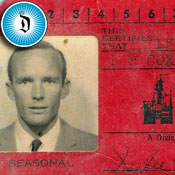 As I recall, there was a satellite that circled around on a big arm on top of the building As I recall, there was a satellite that circled around on a big arm on top of the building
that housed the Circarama show that included space and satellites. Both
the arm and the satellite would turn, and they were a replica of the
AT&T telecommunications satellite. It was a big deal in those days
because of the TV broadcasts of the Olympics. Later the big ball stopped
turning (another detail that was left to fall apart). A little side
note: one of our airplanes, called the Piper Comanche, broke its lines
during a show. It was the largest, green and cream colored, plane. It
was very powerful, and actually should have been on 100 feet of control
line. Our circle would only allow 50′ of line, so we had to use steel
fishing line with special connectors, and we would set the engine to
“full rich” so it would run slow. BUT; on very hot days, the full
mixture would lean out, and the plane would start to go full speed half
way through the flight. When that would happen, you could only hang on
until the fuel ran out in about 5 minutes, and keep the plane below the
fence line just in case. The fuselage of the plane would start to slide
off the wing, and then the lines would give out, and the plane would
slam into the fence at about 60 mph.
That particular day we had a bit of a Santa Ana wind, and a gust took
the plane above the fence line just as the lines broke and off it went.
It did a half roll and zoomed right towards the clock about 20′ off the
ground. At the last minute, it rolled over again and took a right turn
and slammed right into the big round AT&T sign on the SIDE of the
building that faced our circle (not visible in this photo),
smashing the plastic. One man near the sign was showered with plastic
and was very upset. We gave him the plane, and it seemed to calm him
down. We paid, and WED began to re-think our being in the park.
|
https://duckduckgo.com/?q=+Circarama+Cenema&t=hf&atb=v80-5&ia=videos&iax=videos&iai=VIAuGUuswZc
https://duckduckgo.com/?q=+Circarama+Cenema&t=hf&atb=v80-5&ia=videos&iax=videos&iai=1jEfMvD41RM
u 周立刚
i 193 views
⇑ Jul 06 2015
 More at YouTube
More at YouTube
.
The first one of Dynamic Dome Screen Cinema with lowest price…





 Buddha
Buddha

 Buddha
Buddha

 Buddha
Buddha

 Buddha
Buddha

 Buddha
Buddha

 Buddha
Buddha

 Buddha
Buddha

 Buddha
Buddha

 Buddha
Buddha

 Buddha
Buddha

 Buddha
Buddha

 Buddha
Buddha












 Filming
Filming The
The


 Photograph
Photograph
 Stanley
Stanley Stanley
Stanley



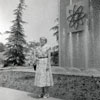
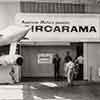

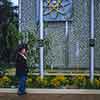

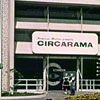



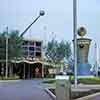
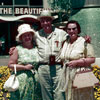

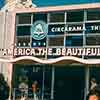
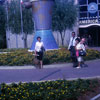

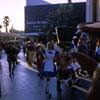
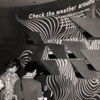


 As I recall, there was
As I recall, there was 



Recent comments
(view all 1 comments)
on
August 8, 2017 at 7:32 pm
There’s been some confusion about Disney’s
360-degree film formats – the original format that opened in 1955 with A
TOUR OF THE WEST, which ran until 1960, and then with AMERICA THE
BEAUTIFUL until 1966, was an 11-screen, 16mm format (in 360 degrees)
called CIRCA-RAMA. When Tomorrowland was refurbished in 1967, with a new
version of AMERICA THE BEAUTIFUL, the 360-degree film format was now a
9-screen, 35mm format (in 360 degrees) called CIRCLE-VISION360.
The original 16mm Circarama camera is on display in San Francisco at the Walt Disney Family Museum.
More info, as well as patent drawings of Circa-Rama that were submitted by Disney – http://www.yesterland.com/circarama.html